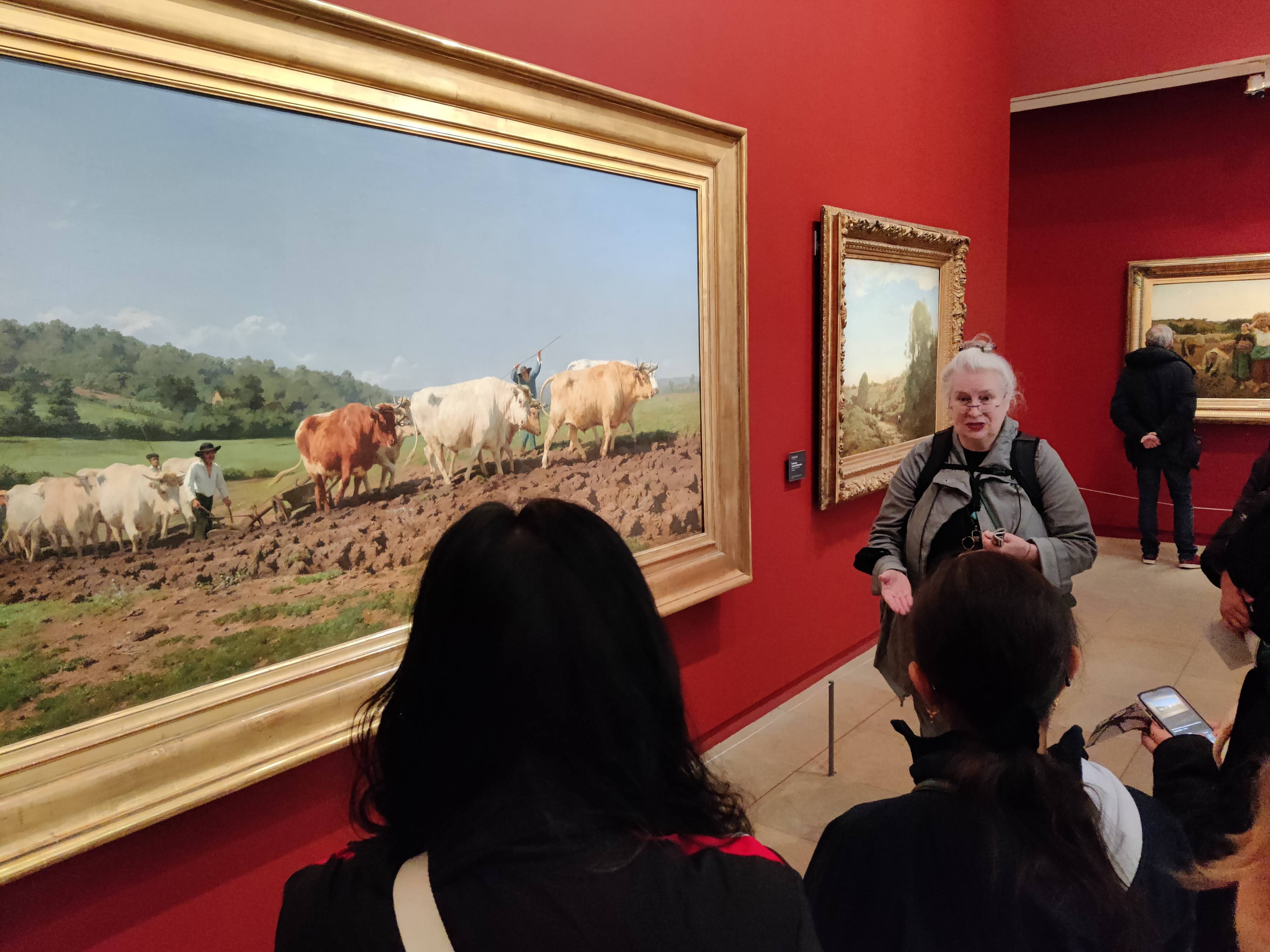Whenever I went to art museums as a child, my eyes would glaze over immediately. I would stomp around bored and frustrated, and leave having gained nothing but a little bit of patience. Of course as an art student I like museums better now, but I’m often not quite sure how to move through them in order to get what I’m ‘supposed to’ from the subject matter. How important is the reading? How hong should I look at each painting? How am I supposed to feel? These experiences could not be a starker contrast to the feelings I had standing in front of Professor C-G’s chosen paintings. Her lectures depicted a narrative that connects the viewer to the artist, and the paintings to each other, while illuminating the ever-changing dialogue between politics, art criticism, and creative direction.

I was particularly boggled on Wednesday morning’s visit to Musee d’Orsay, where we learned about the world of French paintings in the 19th century. The painting in this picture, Ploughing in the Nivernais aka The First Tilling by Rosa Bohneur was striking not only because of Bohneur’s technical mastery, but also because of the legal and logistical obstacles she overcame to be able to paint this, and the unlikely success of an unruly woman on her own path.
The impressionism upstairs was exciting because of how it informs my contemporary American art education. These paintings were relatable ideals to me and understanding their place in history while seeing them up close for the first time left me eager to see more.



After lunch my friend and I elected to visit Monet’s Waterlilies at Musee l’Orangerie, which was a borderline transformative experience. I was initially underwhelmed by the quality of the work, the paintings were shorter than I expected and I disagreed with the room’s white walls. There were sections on the edges of the canvas where it looked like Monet started to give up. Knowing that I might not ever see this work again, I sat in front of the wall for a long time and picked apart all of these ideas. Using my art class critique skills I considered all the metrics of these paintings and compared it to my goals with my own work, a thought process which isn’t possible when I’m viewing, say, Da Vinci. I allowed myself to see what people see in Monet’s work, understanding the creative doors that he opened for me. While I wouldn’t judge these paintings as the most perfect ones I saw that day, the 8 walls of waterlilies may have had the most to teach me. I learn the most from art when I consider how the artist chooses to connect with their own humanity, through a feedback loop of creation and understanding, artist, psyche, environment and medium, which I feel newly honored to opt into.

